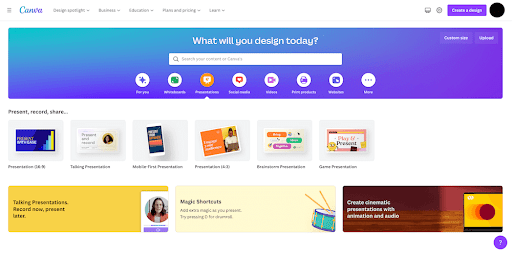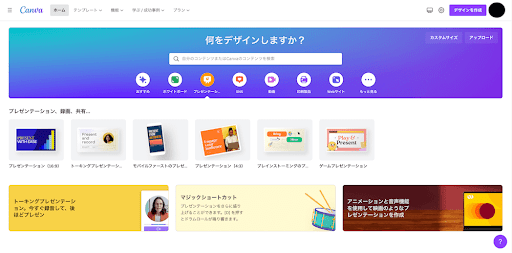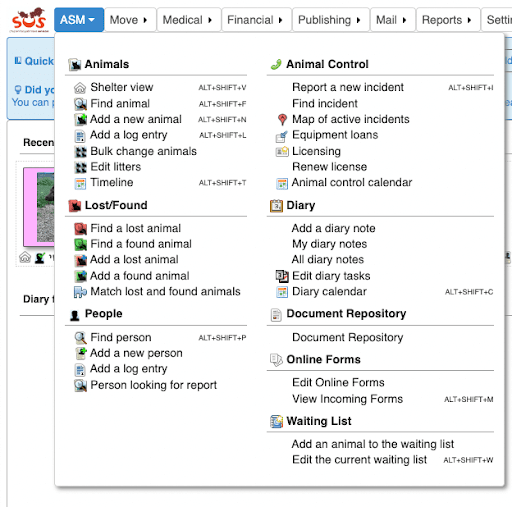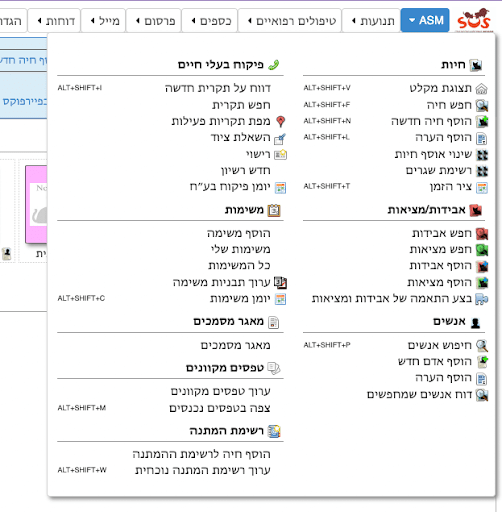“There’s an app for that.”
This catchy Apple slogan isn’t just a sleek marketing line—it’s an undeniable truth. App usage has become ingrained in the day-to-day lives of people around the world, with mobile app downloads soaring to 255 billion by the end of 2022.
Understandably, more and more businesses (ecommerce and otherwise) have invested in branded software applications hoping to claim their slice of the pie. In other words, the attention, engagement, business, and loyalty of their target customers.
But it's not as simple as “build an app and watch the customers roll in”—76% of consumers prefer product info in their native language. So, if you’re building an app (and who isn’t?) for a global audience, software localization should be part of your development process.
What is software localization?
Software localization is the process of adapting your application or software user interface for your target market. It’s not just about translating your content from your source language to a target language—it’s about making your product look and feel local.
The benefits of software localization: What you have to gain
What’s the extended impact of making your product “look and feel local”? There are many benefits:
- Reach more users globally. Software localization allows you to expand your user base beyond your home market, including by improving your SEO ranking potential and boosting discoverability in international search results.
- Deliver better user experiences. Besides being able to attract more users, you’ll be able to provide better user experiences in their own language and customized to their cultural norms. This can go a long way in terms of boosting user retention and customer loyalty.
- Increase conversions and sales. Many users will feel more comfortable engaging with and purchasing from you if your software is available in their preferred language. This is particularly true if they have little to no fluency in English (or your core language).
- Gain market share. If you release localized versions of your software faster than your competitors, you can gain a first-mover advantage and increase your market share in those regions.
Clearly, localizing your software is worthwhile. But where do you start?
Software localization vs. internationalization
It’s easy to confuse software localization with internationalization, which you may have heard of. In the earlier days of software, applications weren’t built to support multiple languages. Businesses would typically create completely separate instances of their solution to support new languages, which was the expensive and time-consuming process known as internationalization.
Preparing your software for localization: Internationalization
Internationalization occurs before any localization efforts begin and is a fundamental step toward adapting your software to support multiple languages. It enables you, on a code level, to include or address foreign languages, other characters and accents, and administrative and billing needs like changing currencies.
Internationalization creates placeholders for translations (often called “strings”) in resource files that automatically change to the correct foreign language based on your customers’ location. Different sources offer varying definitions but mostly fall back on the same best practices:
- Separation of user interface (UI) elements from the source code of content
- Support for multiple languages and file formats
- Written text supported in multiple formats like right-to-left (RTL), left-to-right (LTR), and vertical
- Support for local, regional, and cultural preferences
- Number formats and numeral systems
- Sorting and presentation of lists
- Handling of personal names and locations
All of this happens before the localization process.
Adapting your application to multiple languages: Localization
Software localization, on the other hand, is the process of adapting your application or software to other languages. This includes content translation and, more specifically, content localization, which incorporates relevant cultural nuance to make the content feel familiar instead of simply replacing English words with translated text.
Software localization generally includes a set of localization best practices:
- Translated text
- UI layout to support different length text
- Culturally relevant graphics and images (like showing the Tokyo skyline instead of the Los Angeles one for a Japanese market)
- Converting currencies and measurements
- Addressing local regulations and legal requirements
Would you like to see some real localization examples?
3 Examples of Software Localization
Check out some ways various brands and organizations have localized their web and mobile apps.
Canva
A great example of software localization is Canva, which uses Smartling to reach 30 million non-English speaking users via localization. To illustrate, here’s what you see when viewing the web app in English.

And here’s what you see when viewing it in Japanese.

At first glance, there may seem to be very few differences besides the language. The images and icons are the same.
But notice that there are some differences in text length. And notice the slight changes when the text is translated from Japanese to English. For instance, “Add extra magic as you present” became “You can spice up your presentation” in Japanese. (The latter could’ve been the closest on-brand translation or more appropriate for Japanese-speaking users.)
While these are minor differences, they’re part of a larger localization effort on Canva’s part. The Canva Pro upgrade popup is another good example. Of course, it’s translated. But the accompanying video also shows the Japanese product experience with all copy for the UI written in that language.

When made throughout a software product, these thoughtful adjustments improve user experience and maintain brand consistency
SOS Pets
Our next example was shared courtesy of Saggi Neumann, founder of the company behind SFTP To Go. Saggi works with SOS Pets, a nonprofit organization that places thousands of dogs and cats in foster homes while helping them find forever families.
Regarding the organization, Saggi told us: “Up until a year and a half ago, they were stuck technologically in the mid-90s at best. They were doing most everything with pen and paper, and copying data over to a Microsoft Access-based database (e.g. adopters, animals, vaccinations, and vet visits). We had to find a good technical solution to help them manage everything. But one of their most important requirements was to have the app localized to Hebrew.”

Saggi continued: “We were lucky to find an amazing piece of software that was open-sourced and translatable. We translated everything, worked with the main contributor on adding Right-To-Left support, and tested various other features such as PDF generation and reports.”

You can see an example of the translated app with Right-To-Left support above.
GoFundMe
Last is another example that showcases what a localized (not just translated) software experience looks like.
In the English version of the GoFundMe platform with the location set to the United States, these are the kinds of featured topics you'd see. They center on holidays, recent events, and US-based initiatives relevant to English speakers in the US.

But what happens when you change the language to Portuguese and the location to Portugal, for instance?

ou’re presented with an entirely different set of topics—things that would be of interest to the new audience. GoFundMe, which invests in localization at scale, uses different imagery and directs users to different topics based on languages and locale.
The software localization process
Software localization workflows are very similar to translation workflows with projects involving every member of the team. You’ll likely have product managers figuring out new app features, project managers keeping everything on track, localization engineers managing the quality assurance (QA) process, and more.
A traditional software localization process
Traditionally, software localization workflows start after design and development. So, translators complete translations after seeing the finished product with all the appropriate contexts. The process looks like this:
- Designers create the UI for a new feature or app page. Copywriters craft the version in your native language. Development codes the English version of the page.
- All code for a given user interface goes into a spreadsheet and gets emailed to your language services provider.
- The agency then emails the spreadsheet to multiple translators for each foreign language.
- The translators complete their work and send it back to the agency. The agency compiles every file into one complicated spreadsheet with every string in each row.
- Each string gets imported manually back into the code by copying and pasting into placeholders.
- Software developers search for bugs and other breaks due to the translation. They then submit re-translation requests as needed for design and translation issues.
Can you see why many businesses don’t use localization? When done traditionally, it’s a time-consuming and expensive process. However, it doesn’t have to be this way if you design with localization in mind.
How to design with localization in mind
Adding translation to the mobile and web application release cycle causes bottlenecks and headaches. This is especially true because translations can break code due to text expansion or unidentified characters. Languages like French, Spanish, Italian, Swedish, and German all expand text by up to 25%. In contrast, right-to-left languages like Arabic and Hebrew can completely change the layout. So can character-driven Asian languages like Chinese.
All of the following also add extra time to the process:
- Reviewing content internally
- Merging code
- Copying and pasting strings
- Manually supplying screenshots and context for translators, which is crucial for accurate, high-quality translations
It can upend months of planning, delaying new releases or language launches. Plus, it's impossible to fix errors on the fly—you won’t know there’s a problem until the very end of the translation process.
What’s the fix? At Smartling, we integrate directly with design tools like Figma. Anyone using the platform for design can incorporate real or pseudo-translations into the design process from the beginning. This makes it possible to fine-tune any text expansion before development begins.
A new, better software localization workflow
Software localization doesn’t have to be that complex.Translation management software (TMS) like Smartling enables continuous localization processes (sometimes called agile localization). This way, you can continually release new features, products, and more without worrying about your localization efforts.
Here’s how it works:
- Smartling integrates with your platform. New and updated content is automatically parsed into strings and sent to a translator.
- Assigned translators complete the work, tracking their progress and communicating directly with you. They may also add relevant words and phrases to your translation memory to make future translations easier.
- When the translations are all set, they automatically go back into your CMS. All you have to do is click “Publish.”
And where are the translations coming from? Smartling Language Services provides human translations from our experts or machine translation customized to your brand. But you can also work with your preferred language service provider (LSP).
Be prepared for the challenges of localizing software
Now that you know a bit more about what the localization process looks like, let’s talk about some of the challenges your localization team may encounter along the way.
- Accuracy: Linguistic and cultural nuances, as well as context, have to be taken into account to ensure that translations retain the intended meaning and style.
- Formatting: The expansion of translated text, for example, can disrupt the user interface and layout, requiring engineers to make modifications.
- Cost: The more extensive your localization needs, the bigger the budget you’ll need. But, thankfully, advancements in machine translation have made localization more cost-effective than it once was, especially for smaller companies.
- Timing: You’ll want to localize new versions of your software as soon as possible. But that can be hard to do for more complex software or when you need to localize into several languages.
- Bugs: Just like bugs can occur in the original version of your software, they can pop up in localized versions too (and take time and other resources to fix).
- Compliance: Data privacy laws and other regulations often vary by country. You need to be up-to-date on the rules and make sure you’re in compliance, so having a local consultant familiar with the region is invaluable.
And these are just a handful of obstacles you may need to overcome. However, there are things you can do to make the process easier for yourself and your team.
5 software localization best practices you need to know
What will help you make a success of your software localization project?
1. Refine messaging and UI/UX copy first
You need to have a firm handle on messaging related to your software so that it can be accurately conveyed in other languages. Beyond that, it’s worth reviewing and tightening up content, UI copy (e.g., button labels and usage messages), and UX copy (e.g., text that guides users through the user experience).
Check and optimize all the above for clarity and concision, which will make the translation aspect of your localization project easier and faster. Efficiency is critical, particularly if you’ll be localizing a software product into several languages.
2. Facilitate good communication
Communication is key between all parties involved in your localization project, but especially between your development and marketing teams. Both need to understand not just the product, but also the needs of the other team.
Never forget that the work of both departments impacts the final product. The copy provided by your writers dictates what your devs will need to code, for instance. So, having everyone on the same page and enabling transparency goes a long way.
3. Use a translation memory tool
We also spoke with Oberon Copeland, Owner and CEO of VeryInformed, about which best practices are most important to stick to. Oberon said, “Understanding the importance of accuracy and consistency is essential. This means the most important best practice when localizing software is to use a dedicated translation memory tool.”
Translation memory tools recall “content that has already been translated, allowing translators to access those segments and prevent variations between different versions for each language or region.”
Why is this recommended?
In Oberon’s words, using a tool like this will “ensure every version of the translated software is as synonymous as possible with its source material, resulting in fewer errors and improved customer satisfaction. Translation memory tools can not only save time and money but also ensure a higher degree of accuracy throughout all stages of software localization.”
4. Put quality assurance measures in place
Your workflow must include quality assurance. When managing this manually, you may appoint a Quality Assurance (QA) Manager or committee. Ideally, they’d be a native speaker of your target language and understand the cultural nuances of your target audience. In any case, their role would encompass everything from reviewing the look of the UI to translation quality to the appropriateness of visuals.
Alternatively, you could automate much of the QA process with a solution like Smartling. Within our software, you can leverage dozens of automated quality checks to catch spelling errors, tag inconsistencies, and more. This speeds up the process once your designated reviewers jump in to give their final approvals.
We should also add that all of our carefully vetted professional translators are native speakers and local experts. Further, our Neural Machine Translation Hub integrates with 11 machine translation engines and will select the best engine for your needs. So, whether you use our translation software, translation services, or both, you’ll have an extra layer of quality assurance built in.
5. How to measure the impact of your localization efforts
On a website, you might measure things like traffic, rankings, and conversion rate. But the metrics that matter are often a bit different when localizing software.
Experienced software developer and growth marketer Abhi Bavishi has led localization projects for numerous SaaS companies. When asked about tracking the impact of software localization efforts, Abhi said, “The key performance indicators (KPIs) I believe matter most are the localization error rate, user engagement rates in the localized regions, and customer support inquiries in the target language.”
Why those KPIs?
- Localization error rate is a measure of quality. The fewer errors you find, the better the user experience will be for users of the localized version of your software. The potential for driving in-app purchases or other conversions is higher as a result.
- User engagement can give confirmation of good user experience. As with content, you want to see users highly engaged. That means spending a good deal of time using your software and, particularly, using it in ways that reflect positive sentiment (e.g., giving 5-star ratings when they see the “how do you like the app” popup).
- Customer support inquiries reveal strengths and weaknesses. There’s a lot to be learned from the comments, complaints, and questions received by your customer support team. If there’s more positive than negative, you’re doing well.
But you should also be tracking actual business results. Weigh initial and ongoing software localization costs against the revenue you’re generating from customers in your target languages or regions. Ideally, Abhi says “the localized product should perform on par with the original version.” It may take some time to get there, depending on how much brand awareness exists in your new market and other factors. But that’s the goal you should be working toward.
Seamless software localization services with Smartling
While app localization has its challenges and many moving parts, you can manage them effectively. Smartling has a lot to offer in this regard:
- Web Proxy. The fastest option for launching your web application into new languages. Smartling’s translation proxy can translate any web app into any language with little to no developer involvement.
- Neural Machine Translation Hub: Translate billions of words instantly and receive up to 350% higher quality translations thanks to Smartling’s multi-machine-engine approach.
- Integrations. Our native suite of connectors enable you to connect Smartling with your tech stack. This makes it easy to manage translations using the applications you work with every day.
- API Endpoints. With hundreds of API endpoints at your disposal, Smartling’s app localization and translation software make custom functionality possible.
Software localization doesn’t have to be a headache and create time-consuming or expensive bottlenecks for your engineering team. Localization software and services like Smartling’s give you one comprehensive solution for all of your localization needs—with the flexibility to include human translation, machine translation, or both.
To take a closer look at how our platform works, watch our five-minute demo. You’re welcome to contact our team afterward for more information on how our white-glove project management and automation make localization easy.








